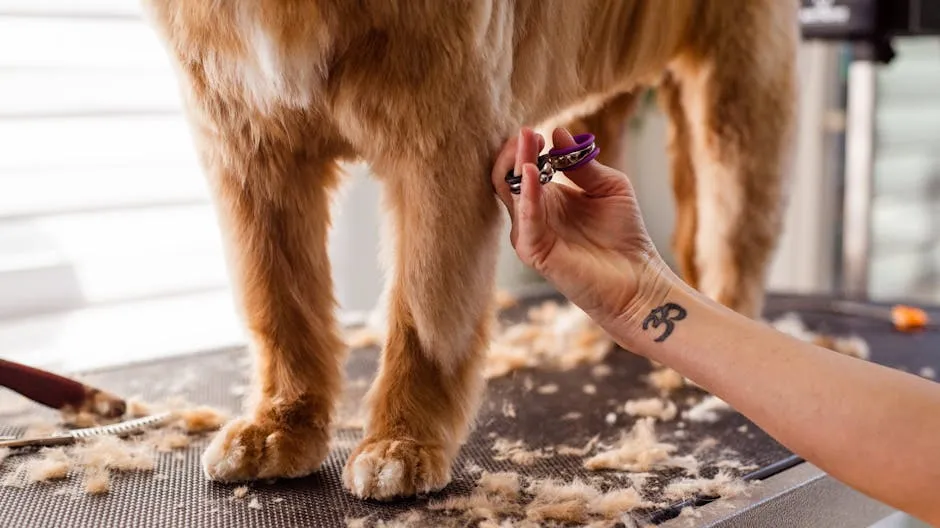Introduction
In a world where our furry friends are often cooped up indoors, the concept of dog treadmills is revolutionizing how we think about canine exercise. Picture this: your pup, happily trotting away, burning calories, and staying fit—all while you enjoy a cup of coffee on the couch. Sounds like a win-win, right?
Dog treadmills are not just a passing trend. They have become essential tools for pet owners, especially those living in urban areas or facing unpredictable weather. When rain pours or snowflakes swirl, your dog still needs exercise. A treadmill provides a perfect solution. No more soggy paws or muddy floors! Plus, if you’re looking for a great option, check out the DogPACER LF 4.0 Treadmill, which is perfect for indoor workouts!
These treadmills come in various styles, tailored for different breeds and energy levels. From small, quiet models for tiny dogs to robust options for larger companions, there’s something for everyone. Curious about their benefits? Let’s break it down!
First off, dog treadmills can help maintain your dog’s physical health. Regular exercise prevents obesity, promotes muscle tone, and keeps joints flexible. With so many dogs facing weight issues today, having an indoor option is crucial. It’s like having a personal trainer that never takes a day off! If you’re concerned about your dog’s comfort while running, consider a Dog Treadmill Harness to keep them secure!
But it’s not just about physical fitness. Mental stimulation is equally vital. A dog treadmill can provide engaging exercise that keeps your pup alert and happy. After all, a tired dog is a well-behaved dog. Say goodbye to those destructive behaviors stemming from boredom!
Plus, these treadmills are great for rehabilitation. If your dog has had surgery or an injury, gentle walking on a treadmill can aid recovery. It’s controlled, safe, and tailored to their needs. If you’re looking for a way to ensure safety, consider getting a Dog Treadmill Safety Stop Button.
So, whether your dog is a couch potato or a hyperactive ball of energy, a treadmill can help them stay in shape. Plus, it ensures they’re entertained while you catch up on your favorite show. Sounds like a win-win, doesn’t it?
In this comprehensive guide, we’ll explore the ins and outs of dog treadmills, from the benefits they offer to how to choose the right one for your furry friend. Ready to jump into the treadmill craze? Let’s get started!

What is a Dog Treadmill?
Definition and Types of Dog Treadmills
A dog treadmill is a specialized exercise machine designed for our four-legged companions. Unlike human treadmills, dog treadmills cater to the unique physiology and movement patterns of dogs. These treadmills offer a space-efficient solution for keeping pets active, regardless of the weather. No more excuses for skipping exercise when the rain pours or the snow falls!
So, what types of dog treadmills exist? Let’s break it down:
Motorized vs. Non-Motorized
Motorized dog treadmills operate similarly to human models, using an electric motor to move the belt. They often come with adjustable speeds, making them ideal for various dog sizes and fitness levels. Plus, they’re fantastic for owners who prefer a set-and-forget approach. Just set the speed, and let your pup trot away!
On the other hand, non-motorized treadmills rely on your dog’s energy to move the belt. These models require your canine to walk or run at their own pace. While this may sound like more effort, it allows dogs to exercise naturally, making it a great option for those energetic pups who love to control their workouts. If you’re considering this option, check out the DogPACER MiniPacer Treadmill for smaller breeds!
Slatmills vs. Carpet Mills
Slatmills are the ultimate training machines for active dogs. They feature a series of slats that move underfoot, providing a unique running surface. These treadmills are often used in competitive dog sports, allowing dogs to build endurance and muscle while having fun. If you want to invest in a serious piece of equipment, look at the Firepaw Phoenix Dog Treadmill.
Carpet mills, meanwhile, are more about the classic treadmill experience. They have a carpeted running surface, offering a gentle workout. This design is perfect for older dogs or those recovering from injuries, as it provides a softer landing while they get back to their fitness routine.
In summary, dog treadmills come in various forms, including motorized and non-motorized, as well as slatmills and carpet mills. Each type has its benefits, allowing you to choose the best fit for your furry friend. With the right treadmill, your pup can enjoy a fulfilling workout, keeping them healthy and happy!

Benefits of Using a Dog Treadmill
Keeping Your Dog Healthy
Regular exercise is essential for your dog’s overall well-being. Just like humans, dogs need physical activity to stay healthy. A treadmill can help maintain their ideal weight, promote muscle conditioning, and enhance mental stimulation.
Obesity is a growing concern for many pets. With a treadmill, you can monitor their exercise levels, ensuring they burn off those extra calories. Plus, consistent workouts help tone muscles and maintain joint flexibility. A fit dog is a happy dog! If you’re looking for a way to reward your dog after their workout, consider some Dog Training Treats!
But wait, there’s more! Mental stimulation is crucial for your pup’s happiness. A treadmill workout engages their minds, keeping boredom at bay. A well-exercised dog is less likely to engage in destructive behaviors, like chewing on your favorite shoes or digging up the garden.

Rehabilitation and Training
Dog treadmills are a fantastic tool for rehabilitation, especially after an injury. Controlled walking on a treadmill can aid recovery, allowing your furry friend to build strength without risking further injury. This gentle approach helps your dog regain confidence and mobility. If you’re looking for a way to ensure a smooth recovery, consider investing in a Dog Grooming Kit to keep their coat in top shape!
Moreover, treadmills are perfect for training in less-than-ideal weather. Rainy days and scorching heat can hinder outdoor walks. With a treadmill, your pup can get their exercise fix indoors, regardless of the elements outside. This is particularly beneficial for high-energy breeds that thrive on regular activity.
For more insights on keeping high-energy dogs engaged, check out our article on top puzzle toys for high-energy dog breeds.

Enhancing Behavior
Exercise has a significant impact on your dog’s behavior. Regular treadmill sessions can reduce anxiety and stress, leading to a calmer pup. A tired dog is less likely to exhibit destructive behaviors. So, when your dog is burning off energy on the treadmill, you’re not just getting them fit—you’re also nurturing a peaceful home environment. And don’t forget to keep them entertained with Dog Puzzle Toys!
In conclusion, the benefits of using a dog treadmill are plentiful. From keeping your dog healthy to aiding in rehabilitation and enhancing behavior, these machines are a game changer for pet owners. So, why not consider adding a treadmill to your dog’s exercise routine? It just might be the best decision you make for their health and happiness!

Choosing the Right Treadmill
Key Features to Consider
When selecting a dog treadmill, several key features should be on your radar. Size matters! Make sure the treadmill accommodates your dog’s size and weight. A proper fit ensures safety and comfort during workouts.
Durability is another essential factor. Look for treadmills made from high-quality materials that can withstand daily use. A solid construction will keep your investment safe for years to come. If you’re looking for a reliable option, consider a Dogmills Economy Treadmill.
Noise levels cannot be overlooked. Some dogs are sensitive to sounds. Opt for quieter models to prevent startling your pup during workouts.
Safety features are crucial, too. Non-slip surfaces, emergency stop buttons, and secure harness attachments all contribute to a safe experience for your furry friend.
Lastly, consider the price range and warranty options. Investing in a high-quality treadmill may seem daunting, but think of it as a long-term solution for your dog’s health. A good warranty can provide peace of mind, ensuring you’re covered for any unexpected issues. And don’t forget to check out Dog Fetch Toys to keep them entertained during breaks!
By keeping these features in mind, you’ll be well-equipped to choose the right treadmill for your dog’s needs. Happy shopping for your new fitness partner!
Popular Brands Overview
When it comes to dog treadmills, several brands stand out in the market. Each offers unique features that cater to different needs and budgets. Let’s take a quick stroll through some of the most popular options: Firepaw, dogPACER, Dog Runner, and Dogmills.

Firepaw
Firepaw is renowned for its high-quality, mechanical dog treadmills. They prioritize safety and allow dogs to control their speed without being forced to run. Their Phoenix Dog Treadmill is a top seller, especially among competitive dog racers. Prices start at around €1,195 for the Phoenix model, while the Mini Dog Treadmill for smaller breeds is priced at €675.
dogPACER
dogPACER offers a variety of treadmills, including the LF 4.0 and the Minipacer. Their treadmills are user-friendly and come with whisper-quiet motors, making them ideal for indoor use. The dogPACER LF 4.0 starts at approximately €617, while the Minipacer is available for around €449.95, making it a great option for small dogs.

Dog Runner
Dog Runner specializes in electric treadmills designed for dogs. Their Tracks model is priced at €899, while the Ortho Pro goes for €1,899. These treadmills are built to withstand rigorous use and are perfect for dogs needing a structured exercise routine.

Dogmills
Dogmills offers a solid lineup of treadmills that focus on durability and functionality. Their Curve model is designed for free walking and starts at €1,279. The Economy model is a reliable choice for pet owners on a budget, starting at €1,486.78. Dogmills treadmills are noted for their low noise levels and long-lasting construction.

Summary
In summary, each brand has its strengths. Firepaw’s mechanical designs prioritize safety, while dogPACER offers user-friendly, quiet options. Dog Runner and Dogmills bring robust choices for serious exercisers. Whether you’re on a budget or seeking the best in quality, there’s a treadmill for every pup!

Maintenance and Safety Tips
Keeping It in Top Shape
Maintaining your dog treadmill isn’t as daunting as it sounds. With a few simple routines, you can ensure it stays in great shape for your furry friend.
First, check the belt regularly. Make sure it’s aligned properly and free of debris. A misaligned belt can lead to wear and tear. Adjust it if necessary—most models have easy-to-follow instructions for this.
Next, inspect the running surface. Over time, it can accumulate dirt and hair. A quick wipe-down after each use can help maintain its cleanliness. For deeper cleaning, a damp cloth should do the trick. Just avoid using harsh chemicals that could harm your pup.
Don’t forget to lubricate the treadmill! Most brands recommend lubricating the belt every few months. It keeps the belt moving smoothly and reduces friction, extending its lifespan. Always use the lubricant recommended by the manufacturer.
Lastly, give your treadmill a thorough check-up every few months. Look for any signs of wear, such as frayed belts or loose screws. Addressing these issues early can prevent bigger problems down the line.

Safety Precautions
Safety should always be a priority when using a dog treadmill. Here are some essential guidelines to keep your pup safe.
First, always supervise your dog while they’re on the treadmill. Just like kids with toys, dogs can get a little too curious. If they seem nervous or unsure, don’t force them to continue.
Start slow. Introduce your dog to the treadmill gradually. Allow them to explore it when it’s off to get comfortable. Once they seem relaxed, turn it on at a low speed. Increase the pace only when they appear confident. Remember, patience is key!
Ensure your dog is properly harnessed, especially during their first few sessions. A good harness prevents them from slipping off the treadmill and ensures they stay secure.
Avoid distractions. Keep the area around the treadmill clear of toys or other items that might divert your dog’s attention. A focused pup is a happy pup, especially when exercising!
Lastly, be mindful of your dog’s limits. If they show signs of fatigue or distress, stop the treadmill immediately. It’s better to have a shorter, effective workout than to push them too hard.
By keeping these maintenance and safety tips in mind, you can create a positive and secure treadmill experience for your furry friend. Happy exercising!

Conclusion
Incorporating a treadmill into your dog’s exercise routine can be a game changer, especially for busy pet owners. Not only does it provide a safe and effective way for your dog to stay fit, but it also helps alleviate behavioral issues stemming from boredom or excess energy. By understanding the different types available, their benefits, and how to train your dog to use one, you can make an informed decision that keeps your furry friend happy and healthy.
Imagine a world where your pup gets their daily exercise without the hassle of weather conditions or time constraints. A treadmill makes this possible! It’s an excellent tool for maintaining their physical and mental well-being. Plus, it allows you to bond over shared workouts—just you, your dog, and the treadmill, all while you catch up on your favorite shows in the comfort of your home. And for those outdoor adventures, don’t forget a Dog Life Jacket!
So, whether you’re dealing with a high-energy breed or a dog recovering from an injury, treadmills can boost their fitness regimen. It’s time to invest in your dog’s health and happiness. After all, a well-exercised dog is a joy to have, and you’ll find that both you and your furry companion will appreciate the benefits. Happy treadmill training!
FAQs
What size treadmill do I need for my dog?
Choosing the right treadmill size is vital for your dog’s safety and comfort. Start by considering your dog’s breed and size. Smaller breeds, like Chihuahuas, can thrive on compact models, while larger breeds, such as Golden Retrievers, need more room. Most treadmills list their dimensions and weight capacity. Generally, look for a treadmill that allows your dog to walk or run comfortably without feeling cramped. A treadmill with a running surface at least 50 inches long is often suitable for medium to large dogs. Always refer to the manufacturer’s guidelines for specific measurements to ensure a perfect fit!
Can my dog use a treadmill if they have health issues?
If your dog has health issues, treadmills can be beneficial but proceed with caution. Conditions like arthritis or heart problems may require tailored exercise solutions. Always consult your veterinarian before starting a treadmill routine. They can provide insights on what level of activity is appropriate for your dog’s specific health status. In some cases, a slow, controlled walking pace may be ideal. Never push your dog too hard—safety and comfort should always come first!
How long should my dog exercise on a treadmill?
Workout durations depend on your dog’s size and fitness level. A general rule of thumb: smaller breeds can start with 10-15 minutes, while larger breeds can aim for 20-30 minutes. Gradually increase these times as your dog becomes more accustomed to treadmill workouts. Monitor your dog for signs of fatigue or boredom. If they seem restless or tired, it’s time to call it a day. Aim for 3-5 sessions per week to maintain a healthy fitness routine. Remember, consistency is key!
Are dog treadmills suitable for all breeds?
Not all treadmills are created equal, and some may not suit every breed. For instance, non-motorized models might work better for high-energy dogs that prefer to set their own pace. On the other hand, motorized treadmills can cater to various breeds with adjustable speeds. It’s essential to consider your dog’s activity level and size before making a purchase. Additionally, larger breeds may require sturdier treadmills with higher weight limits. Always check the manufacturer’s specifications to find the perfect match for your furry friend.
Can my dog run on a treadmill without supervision?
Supervision is crucial when your dog is on the treadmill. Dogs, like toddlers, can be unpredictable. They might trip, lose their footing, or become startled. Always stay close by during their workout to ensure they stay safe. If your dog seems nervous or unsure, don’t force them to continue. Gradual acclimatization is essential. Start with short sessions and build up as they become more comfortable. Your watchful eye can help prevent accidents and create a positive treadmill experience!
Please let us know what you think about our content by leaving a comment down below!
Thank you for reading till here 🙂
All images from Pexels





